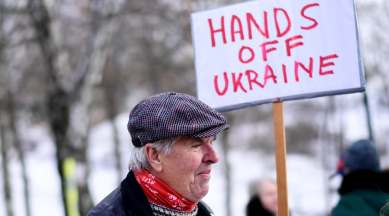



Article by: Hari Yellina
The Russian invasion of Ukraine, in addition to the region’s devastating human toll, will have major repercussions for the Australian agricultural sector. This has many scrambling to figure out what caused Russia to invade and in turn ignite what is likely to be Europe’s deadliest conflict in 25 years. Since the establishment of the Ukrainian state in 1991 with the fall of the Soviet Union, the two countries have had a long and tense relationship, with tensions growing quickly in recent years. Late last week, Russian President Vladimir Putin made a telling statement in which he stated that Russia does not recognise Ukraine as a historic nation, calling it an artificial product of the Soviet era, words that revealed his attitude toward the country.
Following that, Russia recognised two eastern Ukrainian provinces, Luhansk and Donetsk, as breakaway independent states, despite the presence of pro-Russian militia in those areas. Recognizing these two countries as independent governments allowed Russia to send troops in as invited peacekeepers rather than as invaders. Russia declared war on Ukraine on Thursday, claiming that it was responding to ‘threats’ from the Ukrainian government. From a Russian perspective, the dissatisfaction dates all the way back to the formation of the new Ukrainian nation after the Soviet Union collapsed in 1991. It is a flashpoint in the two countries’ simmering relations, which have notably exploded in the past, such as when Russia annexed Crimea.
In modern days the dispute has reached boiling point due to the issue of Russia’s displeasure at Ukraine’s attempts to join the North Atlantic Treaty Organisation (NATO). The disagreement has enormous economic ramifications for Australian agriculture. Energy, fertiliser, and grain are the three key topics being studied. Because of the risk of obtaining supplies out of the Black Sea, which supplies roughly 30% of the world’s wheat, grain prices have the potential to surge. Russia is a big exporter of gas and oil, and global sanctions will drive purchasers to look for commodities elsewhere. Crude oil prices have already risen above $US100 per barrel for the benchmark Brent-type oil, a multi-year high. Consumers in Australia were already paying exorbitant rates for gasoline, and the latest turmoil might push prices past $2 per litre.
Finally, on the fertiliser front, Russia has imposed urea export taxes to ensure that the nitrogen fertiliser is available in adequate quantities to meet domestic demand. Late last year, urea prices reached multi-year highs before decreasing somewhat as global gas supplies increased. The most recent information is anticipated to put renewed upward pressure on global nitrogen fertiliser prices.